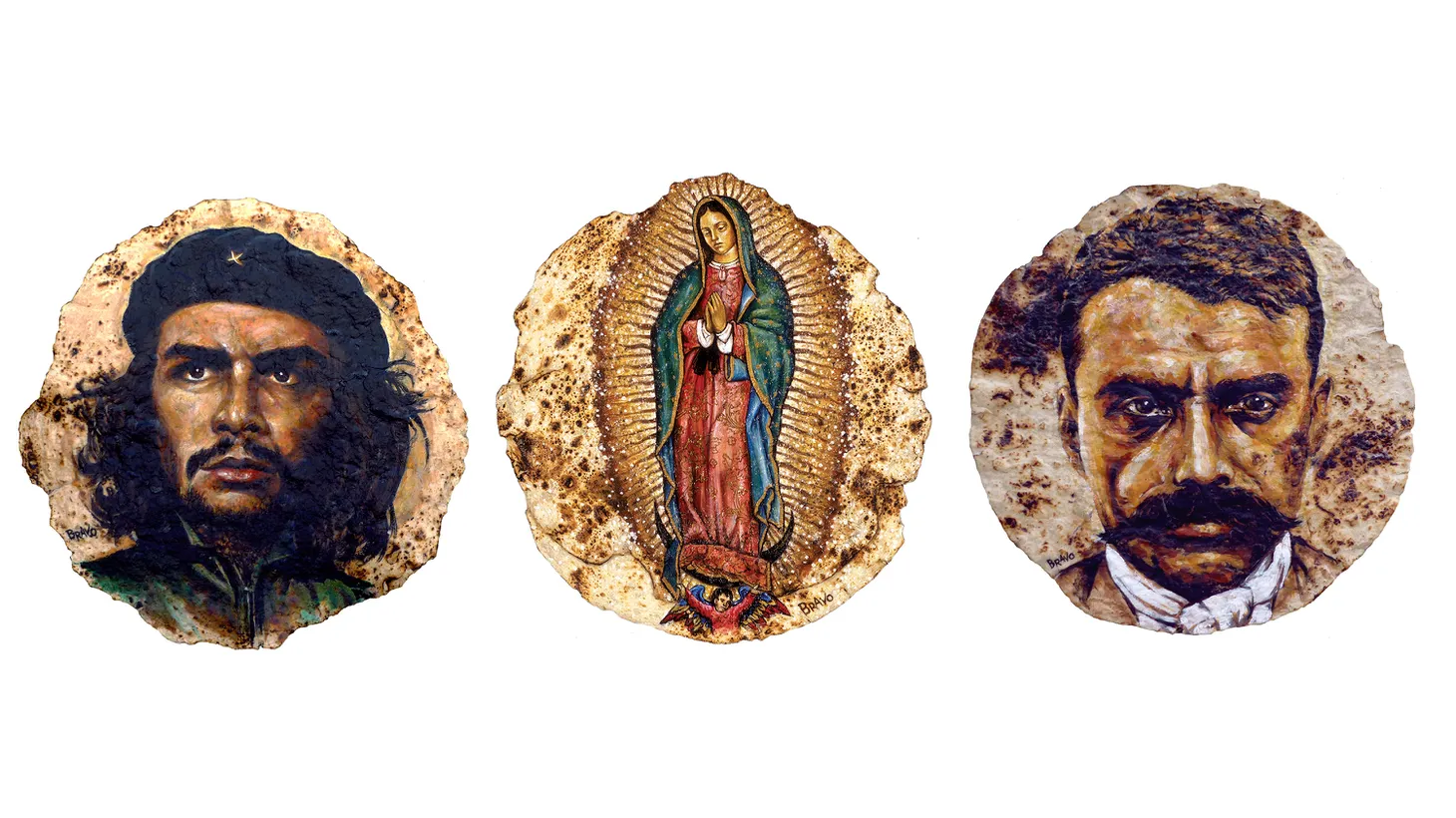Standing on top of a scaffold in Highland Park on the side of Parkside Laundry on Avenue 63, wearing a wide-brimmed straw hat and clothes covered with specks of orange, blue and white, artist Joe Bravo applies strokes of green foliage to his mural-in-progress as he talks about his career.
"My art is the sum of my life's experiences," the 73-year-old says.
He is an accomplished artist many times over: a muralist, a graphic designer, a portrait artist. But what have earned him worldwide attention are his innovations in tortilla art.
On large flour tortillas lacquered to preserve them, Bravo paints vivid icons rooted in Mexican heritage: Emiliano Zapata, Che Guevara and the Virgen de Guadalupe. His collections of tortilla art have appeared in local galleries throughout the U.S. and traveled as far as Hong Kong.
Every year for KCRW and Gustavo's Great Tortilla Tournament, he leads free art workshops open to children and kids alike. He's doing it again at this year's finale, on Oct. 8 at Smorgasburg L.A.
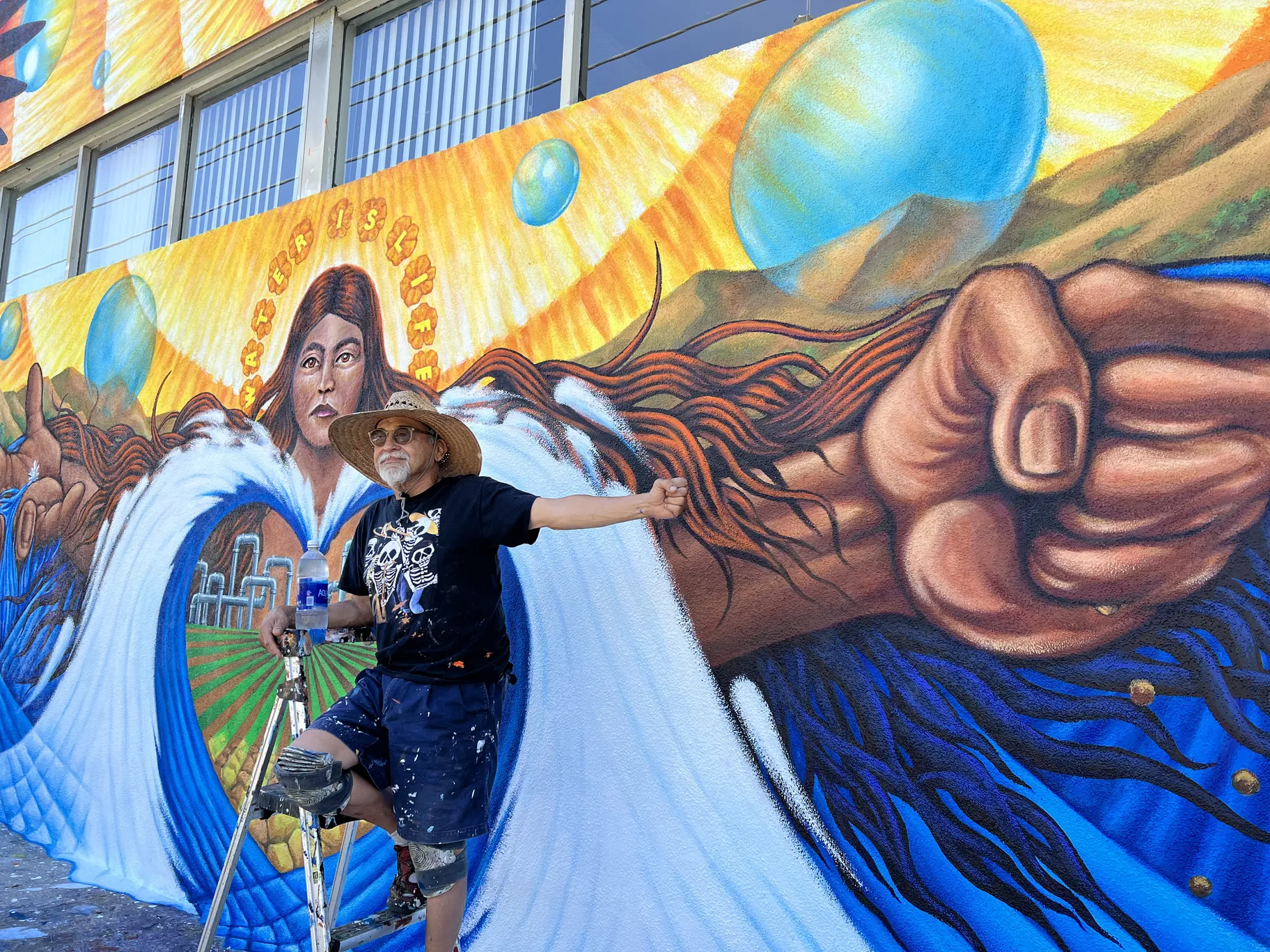
Joe Bravo in front of his mural-in-progress, “Water is Life.” Photo by Cynthia Rebolledo
Using tortillas as a canvas dates back to Bravo's days at Cal State Northridge, when a fortuitous final project for an art class led him on a journey that would become integral to the development of his aesthetic.
Born in San Jose, California, Bravo grew up in the border town of Calexico and spent his childhood crossing the border to Mexicali, where his tías and cousins lived. As a boy with few toys, he constructed slingshots, wood swords and mud figures to keep himself entertained. He moved to Los Angeles County with his family in the early 1960s and attended junior high and high school in the port town of Wilmington.
In college, Bravo joined the Chicano civil rights movement, which he still calls El Movimiento, a distinction that makes it more of a philosophy than mere history. With pieces and installations that were both dynamic and responsive, he joined the wave of artists that documented what was going on. Bravo also served as graphic artist for the student Chicano newspaper, El Popo (first published in 1970 by students concerned about the lack of a Chicana and Chicano perspective in newspapers) and organized the first Chicano art exhibit at CSUN recognized by the art department.
"I like to think that maybe some of my activism contributed towards the change" at the school, Bravo says. Today, CSUN's Department of Chicana and Chicano Studies is the largest of its kind in the country offering all kinds of art classes while examining the identities that inform Chicana visual expression, creative production and cultural activism.
During his time at CSUN, Bravo also had an unconventional art final.
"I had an art project due and I didn't have the money to buy canvas," Bravo says. He had just finished eating breakfast, and his eyes settled on a bag of corn tortillas sitting on the counter. Bravo painted five tortillas with Mayan codices and assembled a hanging mobile. He passed his final but the mobile crumbled to pieces shortly after an encounter with the Santa Ana winds.
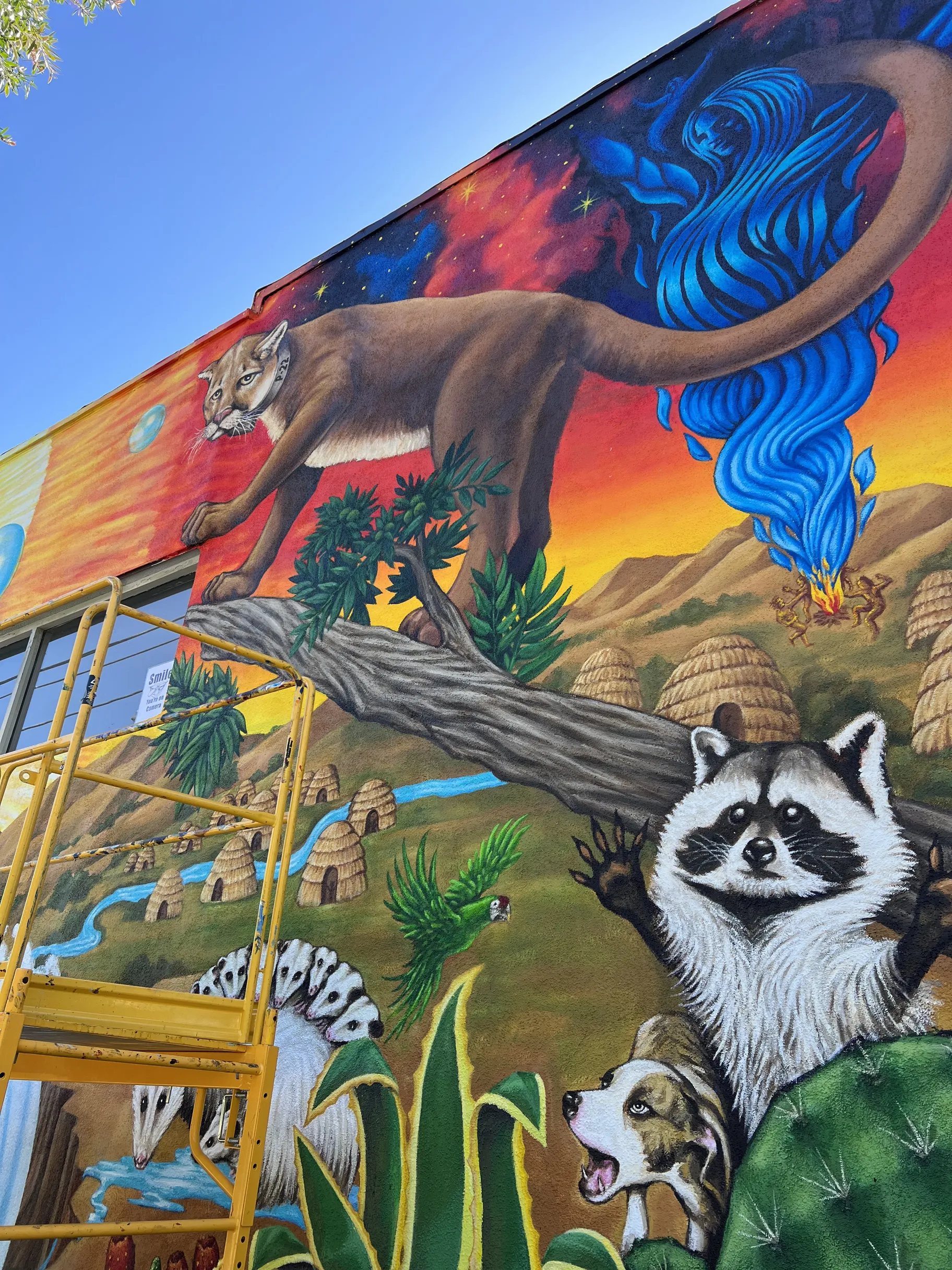
The late P-22 makes an appearance in Joe Bravo’s mural “Water is Life.” Photo by Cynthia Rebolledo
After graduating in 1973 with a bachelor's degree, Bravo worked as a commercial graphic designer, freelanced for various advertising agencies and served as art director for Lowrider magazine. In addition to his graphic work, Bravo also painted murals in the late 1970s as an artist-in-residence for the California Arts Council. Among the pieces he worked on: The Wilhall mural at the Wilmington Recreation Center, restoration of The Great Wall of Los Angeles along the L.A. River, and a mural depicting the history of Highland Park that still stands at an AT&T building in the neighborhood.
Bravo eventually reconnected with his tortilla art in 2001 after a conversation with a friend from CSUN. "I remember her saying she thought my college art project was a great political and cultural statement and it got me thinking. I decided to give it another try and started experimenting with different varnishes," he says.
This time, Bravo swapped corn for flour tortillas and went bigger: from 13-inch to 28-inch tortillas. Instead of buying them from a local mercado, he got his tortilla canvases custom-made by Tortilleria San Marcos in Boyle Heights. To prepare them, Bravo singes the flour tortillas over an open flame and applies multiple coats of varnish. The process makes them flexible yet sturdy. He reinforces them by adding a final coat of acrylic, and burlap on the back. The burn marks take on a life of their own, inspiring Bravo's designs.
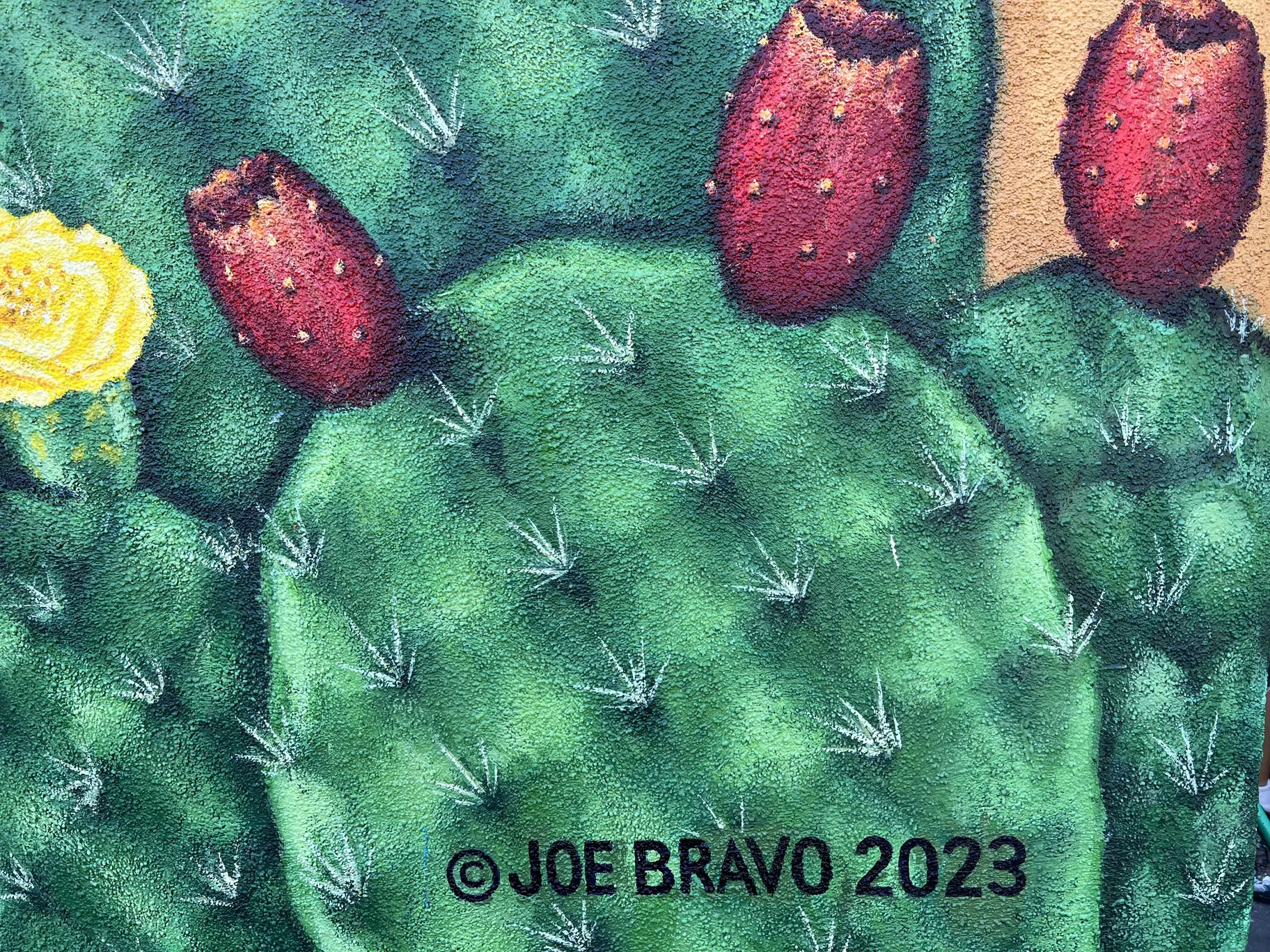
Joe Bravo’s signature on nopales with prickly pears. Photo by Cynthia Rebolledo
"I look at the tortilla and work with its natural texture," Bravo says. "It becomes a collaboration where the tortilla may suggest things."
A musician (he plays guitar and harmonica), Bravo says he was most excited when Flea of the Red Hot Chili Peppers purchased his tortilla painting of the Virgen de Guadalupe. "I offered to take it to his house in Malibu," he says. "He invited me in for some tea and we talked about jazz. It was great."
Bravo says he was selling paintings that started at $1,500 and looking at sponsorship deals until the 2008 recession brought everything to a halt. He faced another life-altering event in 2017 when he noticed an egg-sized lump on the side of his neck. Doctors diagnosed him with two kinds of cancer, squamous cell carcinoma and thyroid cancer.
"Luckily, the cancer was caught before it spread," Bravo says, pointing to the red scar on his neck. He went on a rigorous treatment plan and lost nearly 50 pounds, which he says ended up saving his life in more ways than the obvious. "I had high blood pressure and was pre-diabetic. It brought all that under control."
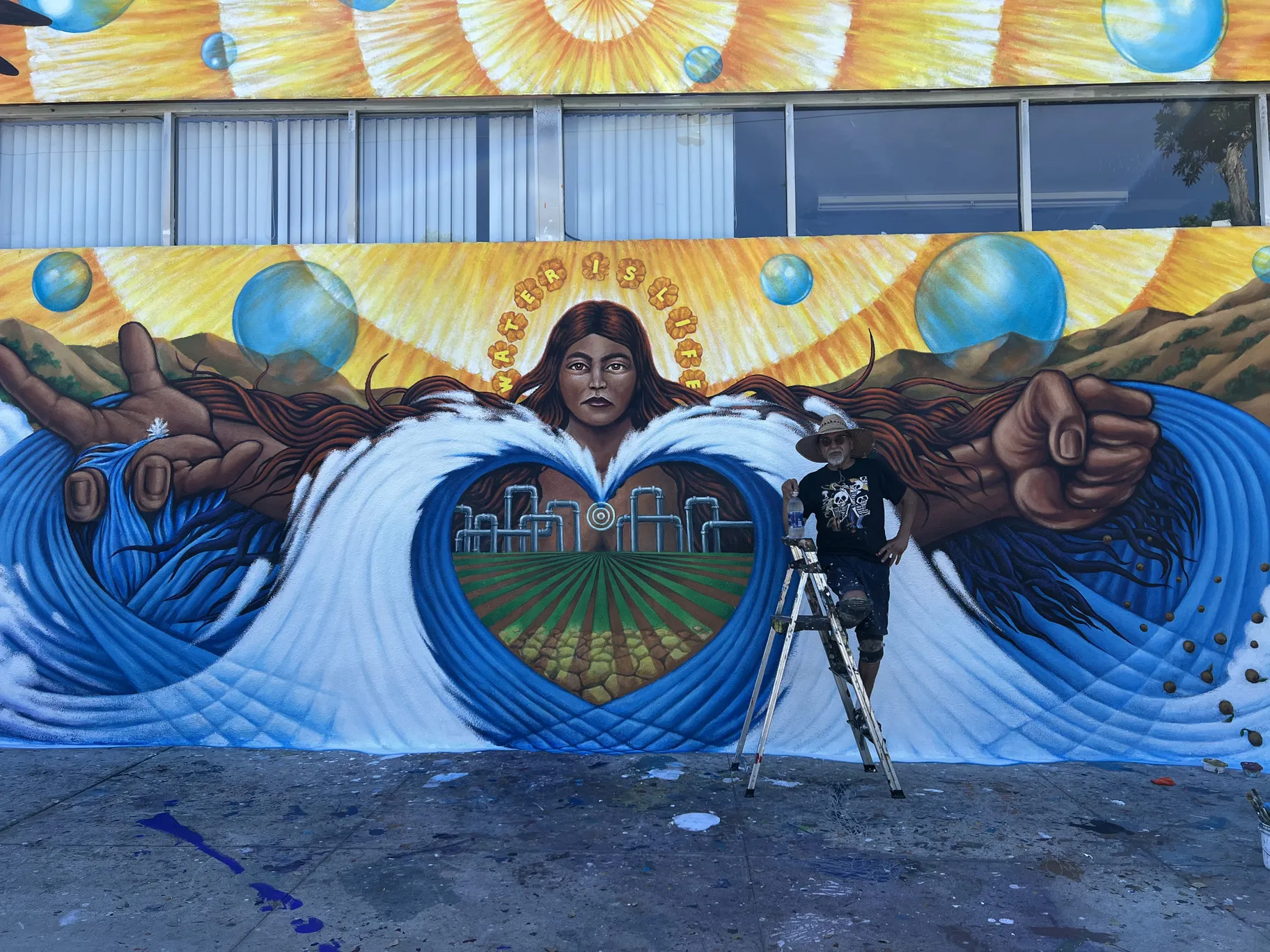
Joe Bravo stands in front of his “Water is Life” mural on the side of Parkside Laundry on Avenue 63 in Highland Park. Photo by Cynthia Rebolledo
In recent years, Bravo has devoted more attention to his murals, culminating in large pieces of public art that interweave symbolism and social justice. He aims to preserve and tell stories about the community for future generations. You see it in his Highland Park mural, "Water is Life," with images of trees, bald eagles, and nopales with prickly pears. At the center is Toypurina, an indigenous medicine practitioner that led a rebellion against the San Gabriel Mission in 1785. Even the late P-22 makes an appearance.
"When I get the opportunity to do my own work, especially a mural, I try to put my own passion, opinion and outlook on certain issues into it," Bravo says during a break. "I believe that if God gave us a gift, we're supposed to share it with the rest of the world."
Although he no longer creates much tortilla art –– aside from the occasional commision and his #TortillaTournament appearances –– Bravo's masa mastery runs deep.
When asked what tortilla he prefers to eat, Bravo says without hesitation, "Corn. I like painting on flour but when it comes to eating –– corn. I just like my maíz. It's in my blood."

